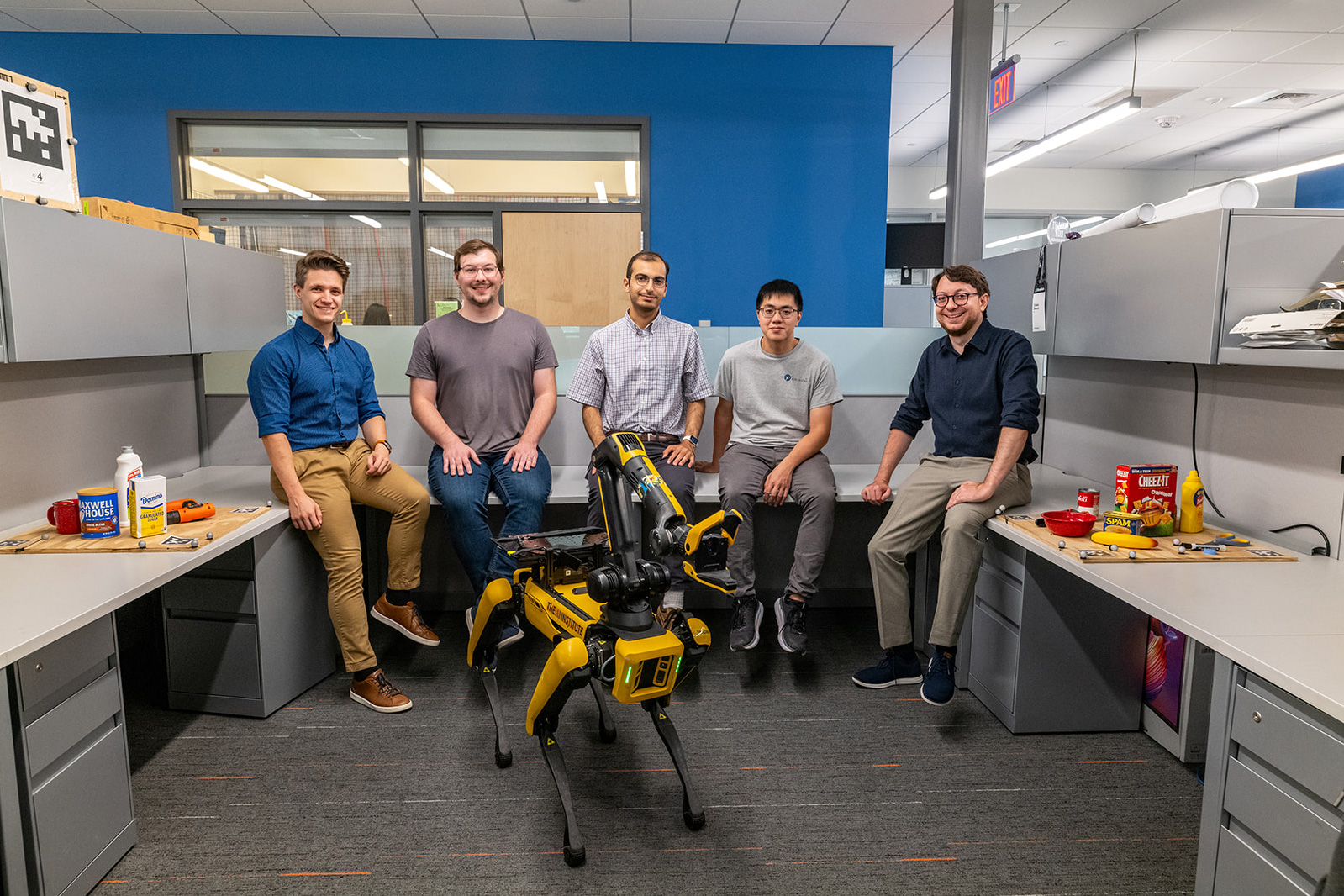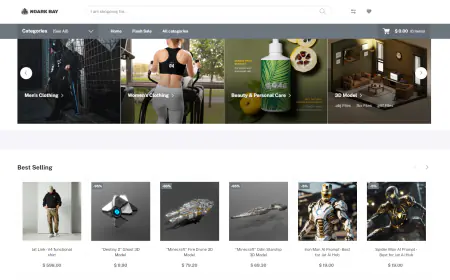Elevate customer experience by using the Amazon Q Business custom plugin for New Relic AI
The New Relic AI custom plugin for Amazon Q Business creates a unified solution that combines New Relic AI’s observability insights and recommendations and Amazon Q Business’s Retrieval Augmented Generation (RAG) capabilities, in and a natural language interface for east of use. This post explores the use case, how this custom plugin works, how it can be enabled, and how it can help elevate customers’ digital experiences.

Digital experience interruptions can harm customer satisfaction and business performance across industries. Application failures, slow load times, and service unavailability can lead to user frustration, decreased engagement, and revenue loss. The risk and impact of outages increase during peak usage periods, which vary by industry—from ecommerce sales events to financial quarter-ends or major product launches. According to New Relic’s 2024 Observability Forecast, businesses face a median annual downtime of 77 hours from high-impact outages. These outages can cost up to $1.9 million per hour.
New Relic is addressing these challenges by creating the New Relic AI custom plugin for Amazon Q Business. This custom plugin creates a unified solution that combines New Relic AI’s observability insights and recommendations and Amazon Q Business’s Retrieval Augmented Generation (RAG) capabilities, in and a natural language interface for east of use.
The custom plugin streamlines incident response, enhances decision-making, and reduces cognitive load from managing multiple tools and complex datasets. It empowers team members to interpret and act quickly on observability data, improving system reliability and customer experience. By using AI and New Relic’s comprehensive observability data, companies can help prevent issues, minimize incidents, reduce downtime, and maintain high-quality digital experiences.
This post explores the use case, how this custom plugin works, how it can be enabled, and how it can help elevate customers’ digital experiences.
The challenge: Resolving application problems before they impact customers
New Relic’s 2024 Observability Forecast highlights three key operational challenges:
- Tool and context switching – Engineers use multiple monitoring tools, support desks, and documentation systems. 45% of support engineers, application engineers, and SREs use five different monitoring tools on average. This fragmentation can cause missed SLAs and SLOs, confusion during critical incidents, and increased negative fiscal impact. Tool switching slows decision-making during outages or ecommerce disruptions.
- Knowledge accessibility – Scattered, hard-to-access knowledge, including runbooks and post-incident reports, hinders effective incident response. This can cause slow escalations, uncertain decisions, longer disruptions, and higher operational costs from redundant engineer involvement.
- Complexity in data interpretation – Team members may struggle to interpret monitoring and observability data due to complex applications with numerous services and cloud infrastructure entities, and unclear symptom-problem relationships. This complexity hinders quick, accurate data analysis and informed decision-making during critical incidents.
The custom plugin for Amazon Q Business addresses these challenges with a unified, natural language interface for critical insights. It uses AI to research and translate findings into clear recommendations, providing quick access to indexed runbooks and post-incident reports. This custom plugin streamlines incident response, enhances decision-making, and reduces effort in managing multiple tools and complex datasets.
Solution Overview
The New Relic custom plugin for Amazon Q Business centralizes critical information and actions in one interface, streamlining your workflow. It allows you to inquire about specific services, hosts, or system components directly. For instance, you can investigate a sudden spike in web service response times or a slow database. NR AI responds by analyzing current performance data and comparing it to historical trends and best practices. It then delivers detailed insights and actionable recommendations based on up-to-date production environment information.
The following diagram illustrates the workflow.

When a user asks a question in the Amazon Q interface, such as “Show me problems with the checkout process,” Amazon Q queries the RAG ingested with the customers’ runbooks. Runbooks are troubleshooting guides maintained by operational teams to minimize application interruptions. Amazon Q gains contextual information, including the specific service names and infrastructure information related to the checkout service, and uses the custom plugin to communicate with New Relic AI. New Relic AI initiates a deep dive analysis of monitoring data since the checkout service problems began.
New Relic AI conducts a comprehensive analysis of the checkout service. It examines service performance metrics, forecasts of key indicators like error rates, error patterns and anomalies, security alerts, and overall system status and health. The analysis results in a summarized alert intelligence report that identifies and explains root causes of checkout service issues. This report provides clear, actionable recommendations and includes real-time application performance insights. It also offers direct links to detailed New Relic interfaces. Users can access this comprehensive summary without leaving the Amazon Q interface.
The custom plugin presents information and insights directly within the Amazon Q Business interface, eliminating the need to switch between the New Relic and Amazon Q interfaces, and enabling faster problem resolution.
Potential impacts
The New Relic Intelligent Observability platform provides comprehensive incident response and application and infrastructure performance monitoring capabilities for SREs, application engineers, support engineers, and DevOps professionals. Organizations using New Relic report significant improvements in their operations, achieving a 65% reduction in incidents, 10 times more deployments, and 50% faster release times while maintaining 99.99% uptime. When you combine New Relic insights with Amazon Q Business, you can further reduce incidents, deploy higher-quality code more frequently, and create more reliable experiences for your customers:
- Detect and resolve incidents faster – With this custom plugin, you can reduce undetected incidents and resolve issues more quickly. Incidents often occur when teams miss early warning signs or can’t connect symptoms to underlying problems, leading to extended service disruptions. Although New Relic collects and generates data that can identify these warning signs, teams working in separate tools might not have access to these critical insights. For instance, support specialists might not have direct access to monitoring dashboards, making it challenging to identify emerging issues. The custom plugin consolidates these monitoring insights, helping you more effectively identify and understand related issues.
- Simplify incident management – The custom plugin enhances support engineers’ and incident responders’ efficiency by streamlining their workflow. The custom plugin allows you to manage incidents without switching between New Relic AI and Amazon Q during critical moments. The integrated interface removes context switching, enabling both technical and non-technical users to access vital monitoring data quickly within the Amazon Q interface. This comprehensive approach speeds up troubleshooting, minimizes downtime, and boosts overall system reliability.
- Build reliability across teams – The custom plugin makes application and infrastructure performance monitoring insights accessible to team members beyond traditional observability users. translates complex production telemetry data into clear, actionable insights for product managers, customer service specialists, and executives. By providing a unified interface for querying and resolving issues, it empowers your entire team to maintain and improve digital services, regardless of their technical expertise. For example, when a customer service specialist receives user complaints, they can quickly investigate application performance issues without navigating complex monitoring tools or interpreting alert conditions. This unified view enables everyone supporting your enterprise software to understand and act on insights about application health and performance. The result is a more collaborative approach across multiple enterprise teams, leading to more reliable system maintenance and excellent customer experiences.
Conclusion
The New Relic AI custom plugin represents a step forward in digital experience management. By addressing key challenges such as tool fragmentation, knowledge accessibility, and data complexity, this solution empowers teams to deliver superior digital experiences. This collaboration between AWS and New Relic opens up possibilities for building more robust digital infrastructures, advancing innovation in customer-facing technologies, and setting new benchmarks in proactive IT problem-solving.
To learn more about improving your operational efficiency with AI-powered observability, refer to the Amazon Q Business User Guide and explore New Relic AI capabilities. To get started on training, enroll for free Amazon Q training from AWS Training and Certification.
About New Relic
New Relic is a leading cloud-based observability platform that helps businesses optimize the performance and reliability of their digital systems. New Relic processes 3 EB of data annually. Over 5 billion data points are ingested and 2.4 trillion queries are executed every minute across 75,000 active customers. The platform serves over 333 billion web requests each day. The median platform response time is 60 milliseconds.
About the authors
 Meena Menon is a Sr. Customer Solutions Manager at AWS.
Meena Menon is a Sr. Customer Solutions Manager at AWS.
 Sean Falconer is a Sr. Solutions Architect at AWS.
Sean Falconer is a Sr. Solutions Architect at AWS.
 Nava Ajay Kanth Kota is a Senior Partner Solutions Architect at AWS. He is currently part of the Amazon Partner Network (APN) team that closely works with ISV Storage Partners. Prior to AWS, his experience includes running Storage, Backup, and Hybrid Cloud teams and his responsibilities included creating Managed Services offerings in these areas.
Nava Ajay Kanth Kota is a Senior Partner Solutions Architect at AWS. He is currently part of the Amazon Partner Network (APN) team that closely works with ISV Storage Partners. Prior to AWS, his experience includes running Storage, Backup, and Hybrid Cloud teams and his responsibilities included creating Managed Services offerings in these areas.
 David Girling is a Senior AI/ML Solutions Architect with over 20 years of experience in designing, leading, and developing enterprise systems. David is part of a specialist team that focuses on helping customers learn, innovate, and utilize these highly capable services with their data for their use cases.
David Girling is a Senior AI/ML Solutions Architect with over 20 years of experience in designing, leading, and developing enterprise systems. David is part of a specialist team that focuses on helping customers learn, innovate, and utilize these highly capable services with their data for their use cases.
 Camden Swita is Head of AI and ML Innovation at New Relic specializing in developing compound AI systems, agentic frameworks, and generative user experiences for complex data retrieval, analysis, and actioning.
Camden Swita is Head of AI and ML Innovation at New Relic specializing in developing compound AI systems, agentic frameworks, and generative user experiences for complex data retrieval, analysis, and actioning.



















![[PRO Tips] Use the BCG matrix to help you analyze the current situation, product positioning, and formulate strategies](https://i.scdn.co/image/ab6765630000ba8a165b48c48c4321b36a1df7b9?#)
![[Business Talk] BYD's Hiring Standards: A Reflection of China's Competitive Job Market](https://i.scdn.co/image/ab6765630000ba8a1a1e0af3aefae3a685793e7c?#)
![[PRO Tips] What is ESG? How is it different from CSR and SDGs? 3 keywords that companies and investors should know](https://i.scdn.co/image/ab6765630000ba8a76dbe129993a62e85226c2b4?#)
![[Business Talk] Elon Musk](https://i.scdn.co/image/ab6765630000ba8ac91eb094519def31d2b67898?#)


















